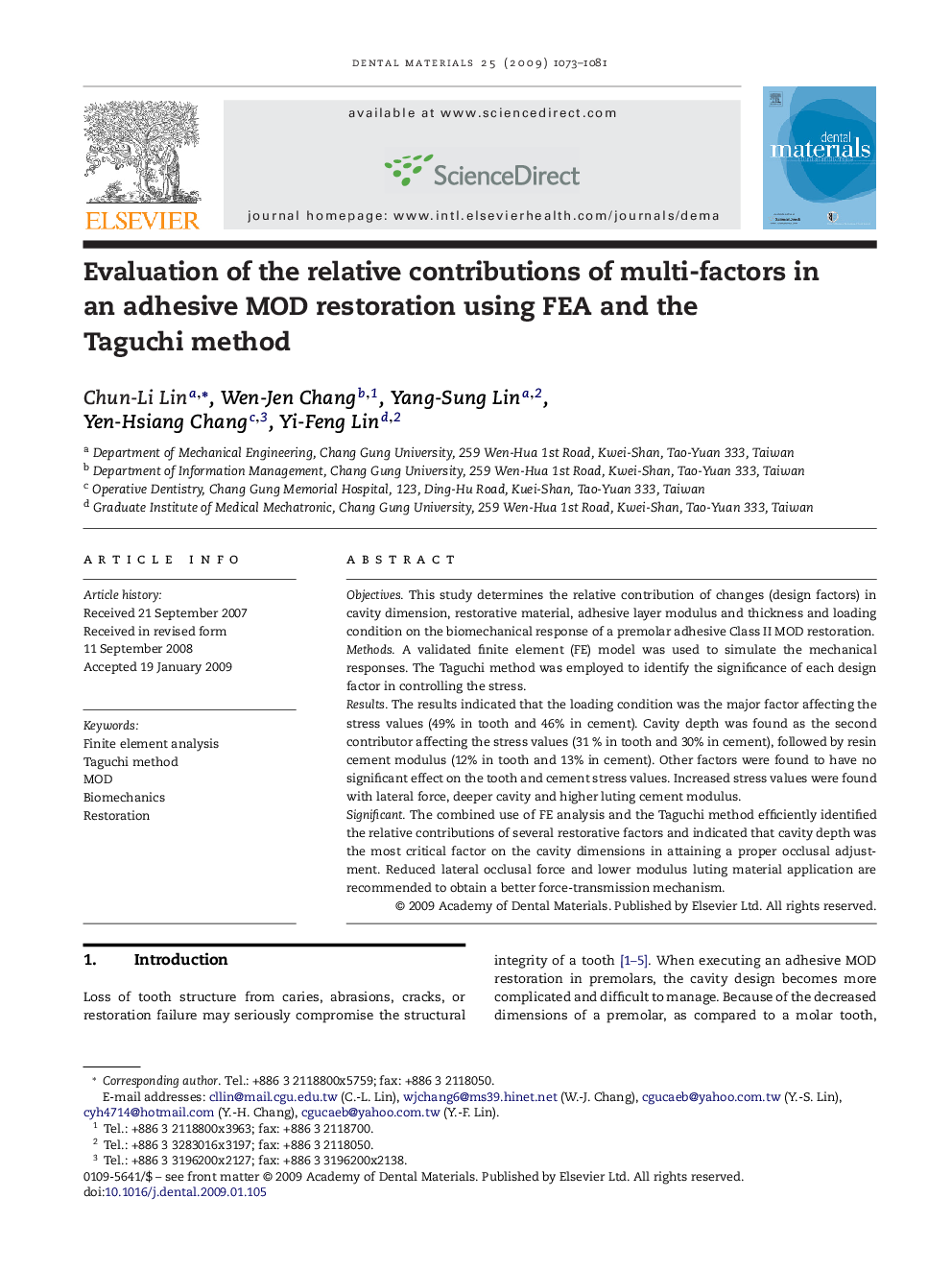| Article ID | Journal | Published Year | Pages | File Type |
|---|---|---|---|---|
| 1422175 | Dental Materials | 2009 | 9 Pages |
ObjectivesThis study determines the relative contribution of changes (design factors) in cavity dimension, restorative material, adhesive layer modulus and thickness and loading condition on the biomechanical response of a premolar adhesive Class II MOD restoration.MethodsA validated finite element (FE) model was used to simulate the mechanical responses. The Taguchi method was employed to identify the significance of each design factor in controlling the stress.ResultsThe results indicated that the loading condition was the major factor affecting the stress values (49% in tooth and 46% in cement). Cavity depth was found as the second contributor affecting the stress values (31 % in tooth and 30% in cement), followed by resin cement modulus (12% in tooth and 13% in cement). Other factors were found to have no significant effect on the tooth and cement stress values. Increased stress values were found with lateral force, deeper cavity and higher luting cement modulus.SignificantThe combined use of FE analysis and the Taguchi method efficiently identified the relative contributions of several restorative factors and indicated that cavity depth was the most critical factor on the cavity dimensions in attaining a proper occlusal adjustment. Reduced lateral occlusal force and lower modulus luting material application are recommended to obtain a better force-transmission mechanism.
